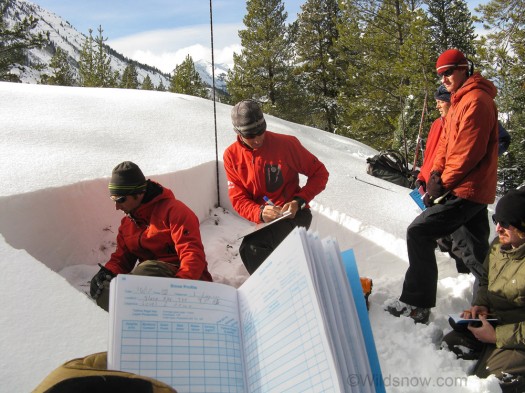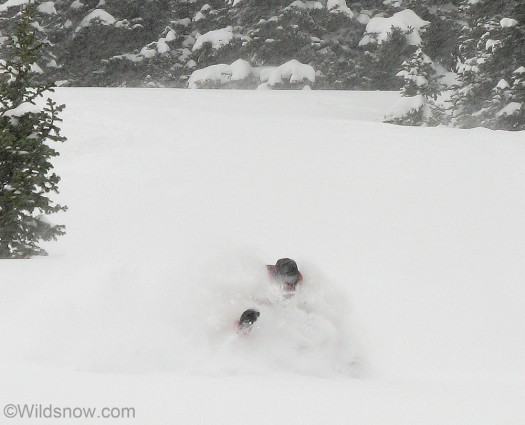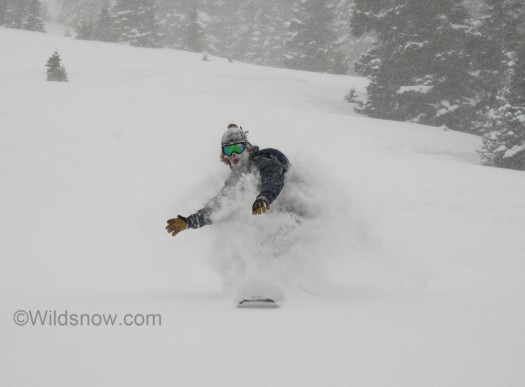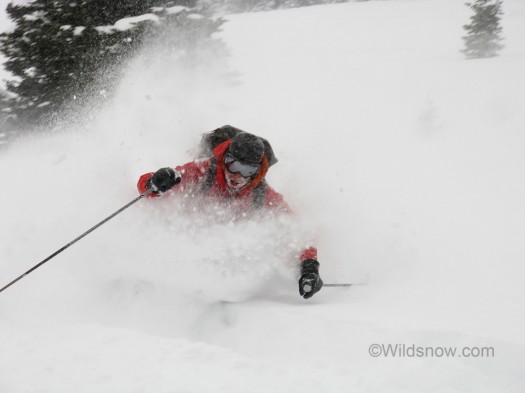The second and third days of our avy course with Crested Butte Mountain Guides has gone well. The second day we dug around and learned how to do a full on professional pit. I’ve never done a full snow profile before, or even looked this close at the various types of snow crystals. It was interesting to be able to see the different types in various layers, and have an understanding of how they got to be that way. I feel like I won’t be digging many full profile pits every time I go backcountry skiing, but I’d still like to dig some regularly, simply to learn more about snow science
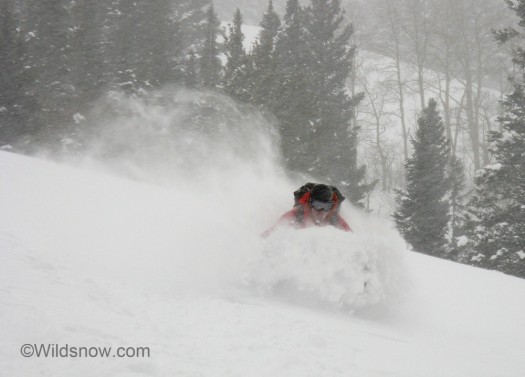
Yes, this is an avalanche class. Doesn't mean we can't get some epic powder skiing along the way! My instructor Mike skiing.
The third day we did a longer ski tour up Washington Gulch, in order to learn some more about terrain selection and dig some more pits. Over night Crested Butte received about two feet of extremely low density snow, and it was interesting to see how the pits compared to the ones we dug the day before. The light snow didn’t do a whole lot for avalanche danger, but the top seven or so centimeters was slightly more dense, which created some interesting reactions in the snowpack. As we were skinning up, we remote triggered tons of small avalanches of the thin top layer, on anything over about 30 degrees. Since the new snow was so thin and so low density it wasn’t much of a hazard, but it was really unique and interesting to see so much activity going on. I definitely learned quite a bit. After finishing our pits and reaching the top, we had an amazing run down the side of the bowl. The snow was incredibly blower, this is going to be a tough day to beat for the lightest snow I’ve skied this year. I’ll let the photos speak for themselves.
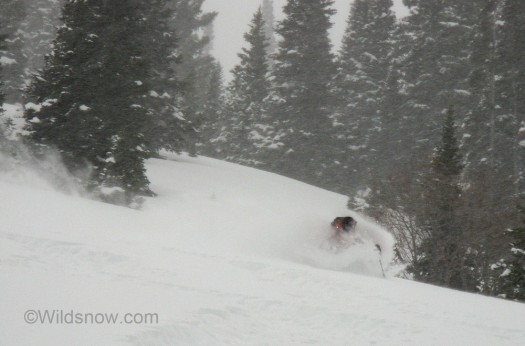
When the snow is to light to get into the density gauge, you just have to ski it to figure it out. Conclusion: blower.
According to Crested Butte Mountain Guides, come take an avy course from them and they’ll provide skiing like this any day of the winter, since they know all the best places — just kidding, as their snowpack is variable like anywhere else in the world — but these guys do know their way around.
Louie Dawson earned his Bachelor Degree in Industrial Design from Western Washington University in 2014. When he’s not skiing Mount Baker or somewhere equally as snowy, he’s thinking about new products to make ski mountaineering more fun and safe.

